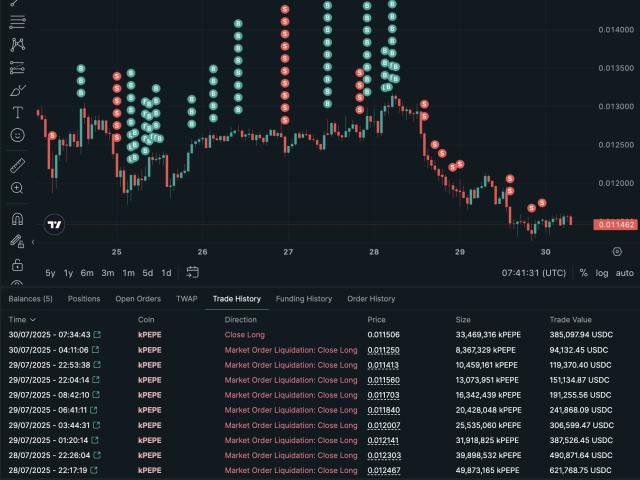At 02:00 Beijing time on Thursday morning, the Federal Reserve maintained interest rates for the fifth time, keeping the benchmark rate target range at 4.25%-4.50%, in line with market expectations. This decision was made against the backdrop of strong political pressure from the White House on Chairman Powell to lower interest rates.
The Federal Reserve maintained its benchmark policy rate in the 4.25% to 4.5% range while weighing how importers, retailers, and consumers will share the costs of higher tariffs. The outcome of the fierce debate about who will bear the tariff burden may determine inflation and employment trends later this year and could decide whether and when the central bank will resume rate cuts.
The Fed made almost no changes in its policy statement, indicating that it currently has no intention of signaling imminent rate cuts.
The decision to maintain rates was unusually opposed by two officials, with Fed governors Waller and Bowman calling for an immediate 25 basis point rate cut. This is the first time since 2020 that more than one Federal Reserve official has voted against Powell's decision, and the first time since 1993 that two board members have disagreed.
Fed Governor Waller had supported rate cuts two weeks ago, which aligns with his potential nomination to succeed Powell as Fed chair next spring. Earlier this month, he expressed concerns that maintaining rates too high could be excessive for an economy lacking inflation momentum - a view supported by some economists and former Fed officials.
Fed Governor Bowman, previously a staunch hawk who opposed the first rate cut last September, has notably changed her stance.
Powell and his colleagues are examining how tariffs will be reflected in inflation data, with markets widely concerned that rising commodity prices could keep inflation above the Fed's 2% target for the fifth consecutive year. Although inflation has significantly dropped from its 2021-2023 peak and the predicted recession did not occur, Fed officials remain highly vigilant about cutting rates too early and reigniting price pressures.
Many businesses have stockpiled inventory before tariffs take effect, hesitant to raise prices due to fears of overwhelming inflation-stressed consumers. However, some economists warn that as low-margin businesses deplete pre-tariff inventories and face higher costs, they may increasingly tend to pass these costs onto consumers.
Richard Clarida, former Powell deputy appointed by Trump, stated:
Economists attribute this decline to slowing labor growth and tariff impacts. Other recent data suggests consumer spending may have stabilized before import costs are reflected in retail prices.
The Trump administration believes that in the long term, tariffs will make the US more prosperous by promoting high-wage manufacturing jobs.
The Fed is caught in a "two steps forward, one step back" cycle in understanding Trump's economic policies. Recent trade agreements with Japan and the EU set tariff levels at 15%, lower than Trump's April threats but higher than early-year market expectations. Trump's unpredictability keeps the possibility of future tariff increases open, with potential judicial challenges that could overturn these tariffs.
Fiscally, Trump signed a major tax cut bill this month. Some Republican lawmakers are discussing consumer rebates, which could provide new stimulus to an economy the Fed considers near full employment. If the labor market remains stable, Fed officials might regret cutting rates too early.
Investors currently estimate about a two-thirds probability of the Fed cutting rates at the September meeting, depending on whether tariff impacts on inflation remain controlled and whether the labor market shows more signs of weakness.
In the coming months, internal Fed disagreements may focus on whether tariffs will damage the economy faster than they push up inflation, and whether premature action might lead to policy misjudgment.
One perspective argues that current rates are already above the range suitable for economic conditions, with insufficient underlying inflation pressure, and the Fed would validate White House criticisms of being "behind the curve" if employment growth stagnates.
Another faction worries that cutting rates during summer, when tariffs increase price pressures, or amid fiscal stimulus and active financial markets, might bring unexpected economic heat, making rate cuts premature.
If data shows a clear direction before September, decisions might be relatively straightforward: delay rate cuts if inflation is stubborn and economic growth is strong, or lower rates if the economy clearly weakens. However, if the current ambiguous state persists, Powell will face more challenging choices.
Richard Clarida, former Powell deputy appointed by Trump, stated:
If data continues to evolve at its current pace, it will become very tricky - neither conclusive enough to cut rates without doubt, nor good enough to declare victory. Therefore, it's more likely than some imagine that Powell will simply remain inactive, maintaining rates unchanged in the remaining six policy meetings of his term.
Click to learn about BlockBeats job openings
Welcome to join the BlockBeats official community:
Telegram Subscription Group: https://t.me/theblockbeats
Telegram Communication Group: https://t.me/BlockBeats_App
Official Twitter Account: https://twitter.com/BlockBeatsAsia







